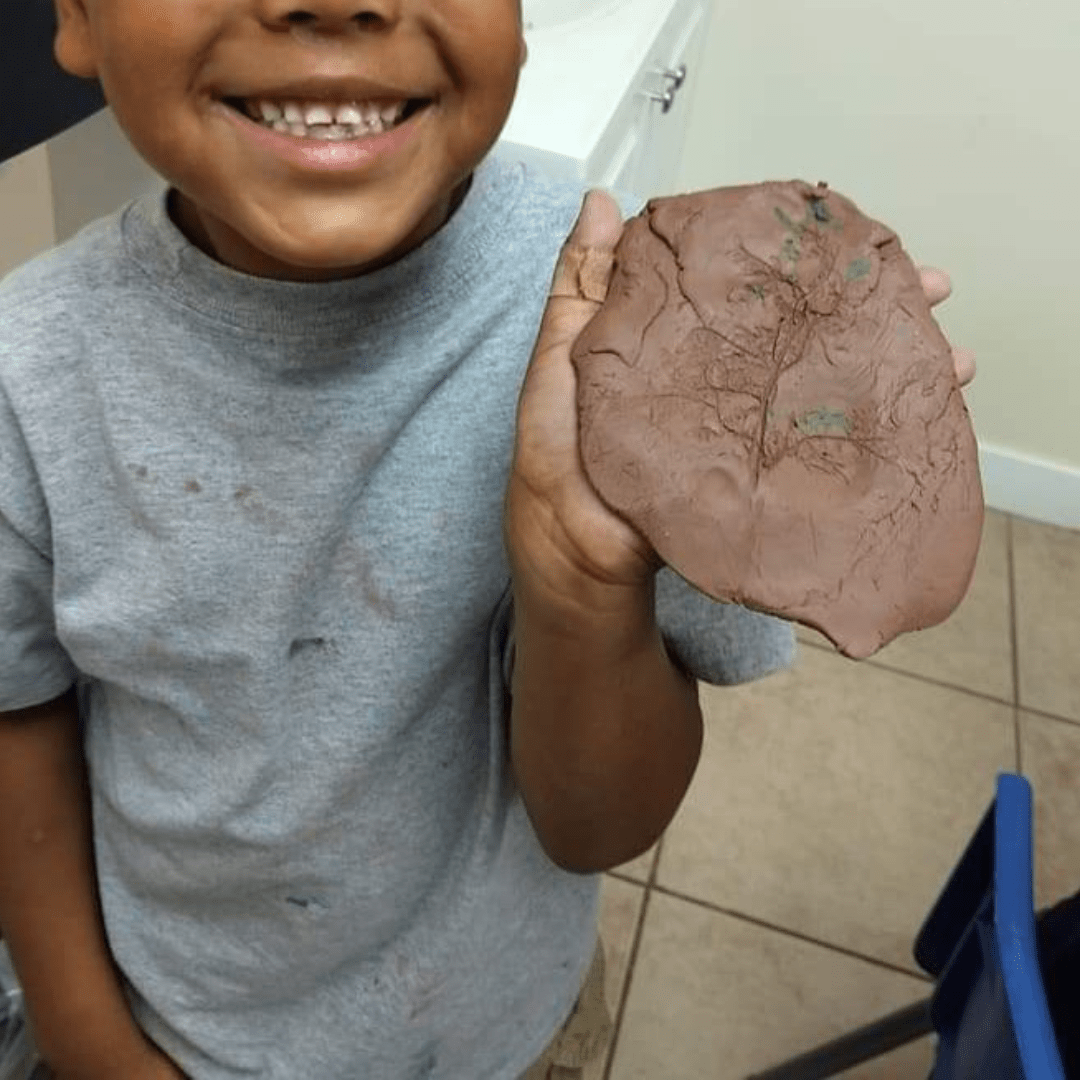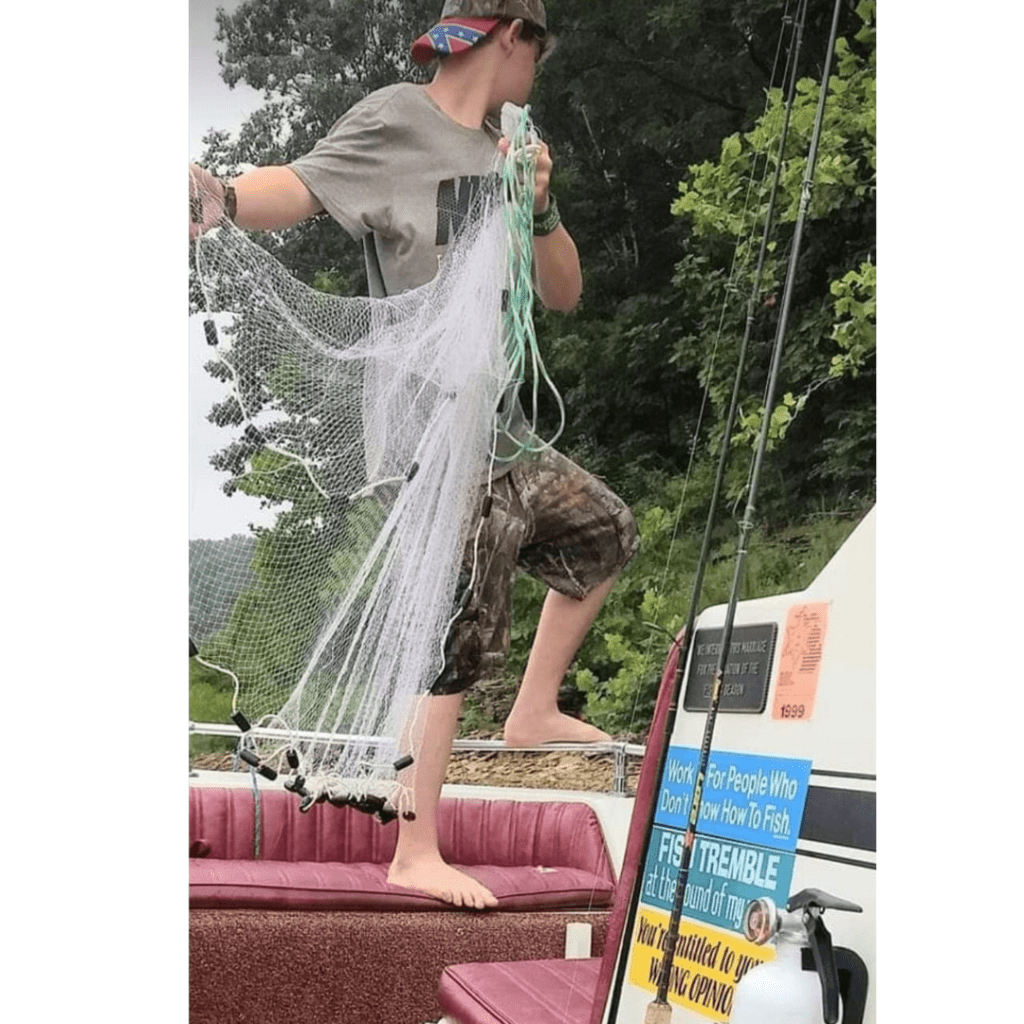When you teach fossils to kids, it sparks curiosity, builds observation and critical thinking skills, and offers a fun way to introduce lessons about nature, history, and survival.
It is essential to teach fossils to kids to show them how ecosystems respond to and recover from extinctions from climate change and how they adapt for survival. Fossils are our connection to our lives from the past, present, and future. We can learn how and why the plants or animals died in our area simply by studying their fossils.
Teach your kids why it is essential to study fossils and how to study fossils with this fun play-dough activity that will make them thrilled to learn about the fossils in their area.
Most of the materials for this activity can be free (plant cuttings found outside) or found really cheaply.
This is a pinnable post. Tap or hover over any image in this post to pin to your Pinterest Boards.
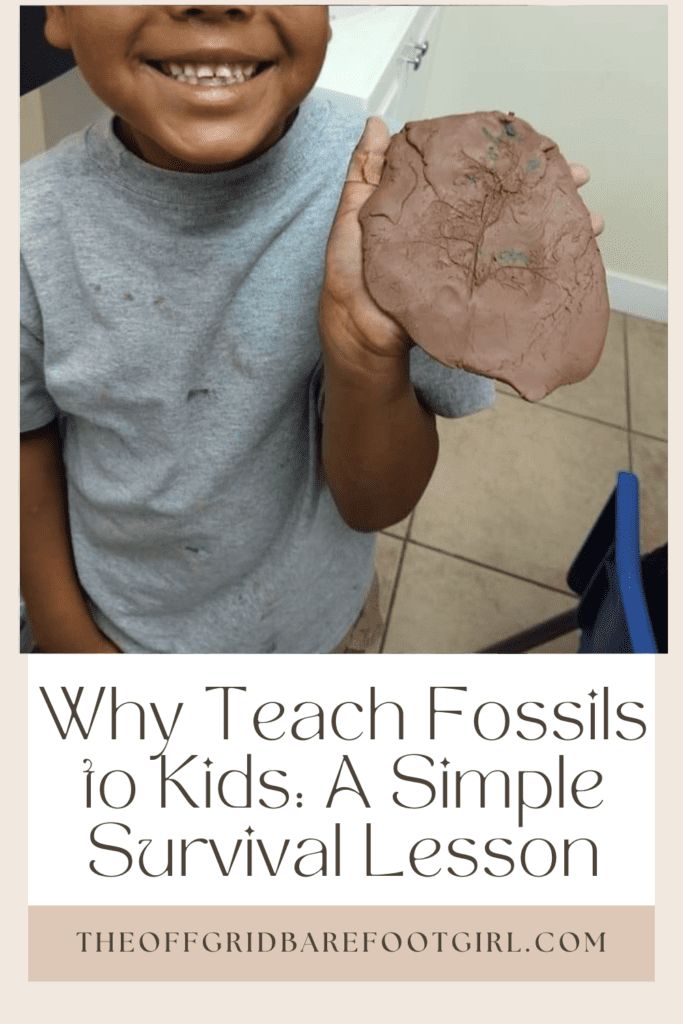
Materials Needed to Teach Fossils to Kids
To teach fossils to kids for this activity, you will need a plastic tablecloth to protect your table, clay or play-dough, cuttings of a variety of plants, and some fun small plastic animals.
Before starting this activity with your kids, it is a fun idea to take them outside on your property to hunt for different types of plants to cut and use for their fossils.
What You Will Need:
- Plastic tablecloth.
- Clay or play dough.
- Cuttings of a variety of plants.
- Small plastic animals.
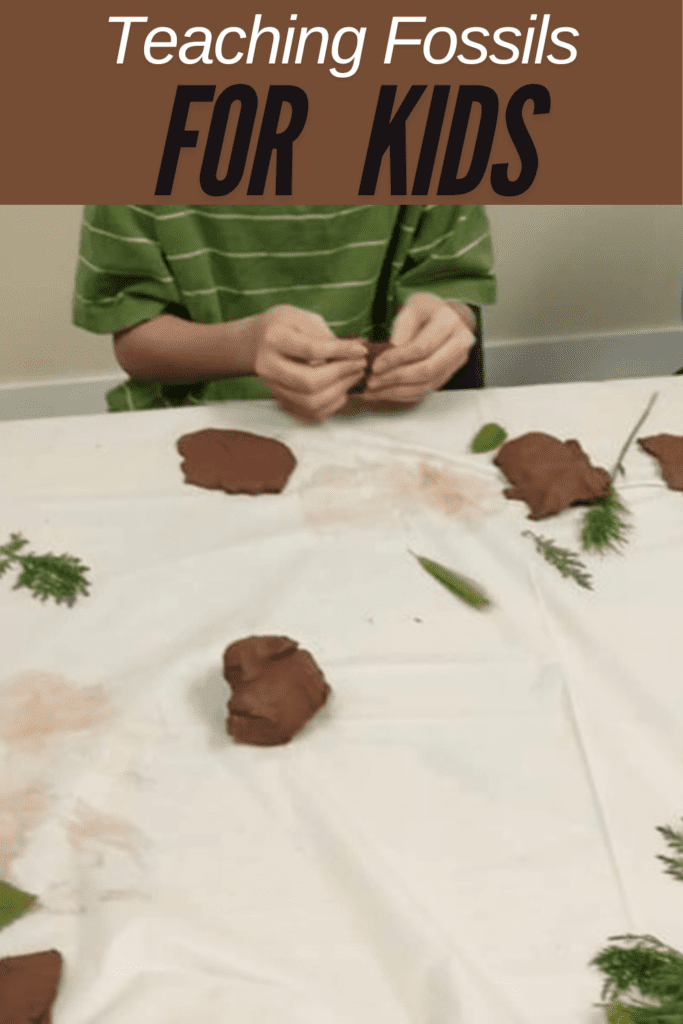
Have your child make circular discs with the clay or play-dough to form the base of the fossil. Then have them take their plant cuttings or a small plastic animal and squish it onto the clay or play-dough to form its shape. The size and shapes of the discs are not too important since real fossils are not perfect either.
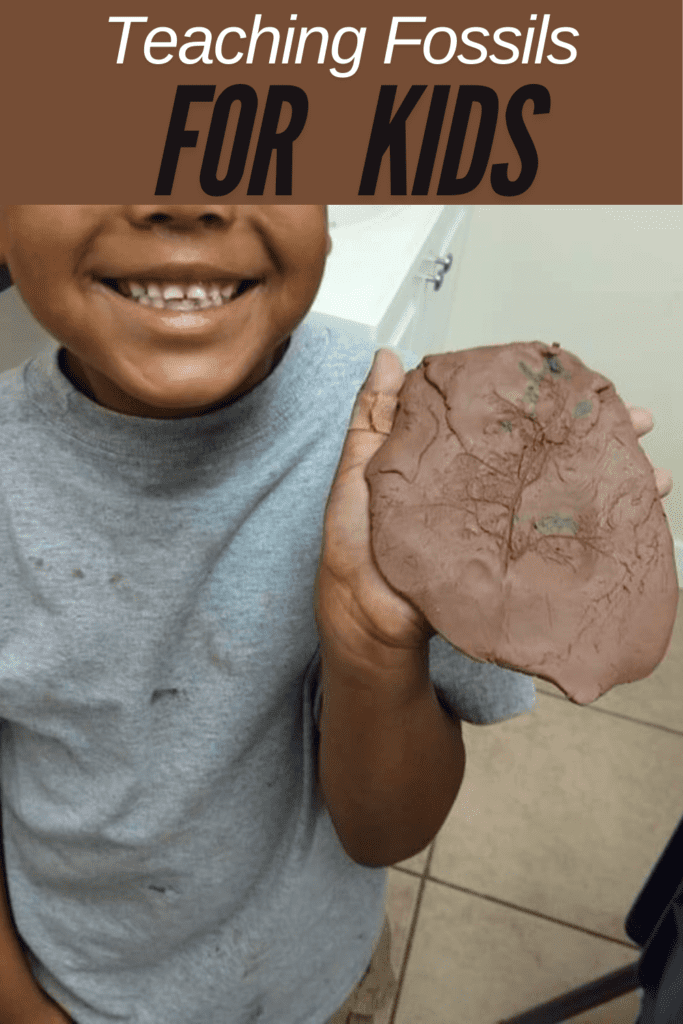
They will have fun seeing the shapes transfer onto their clay or play-dough discs. Have them do as many different fossil discs as they want.
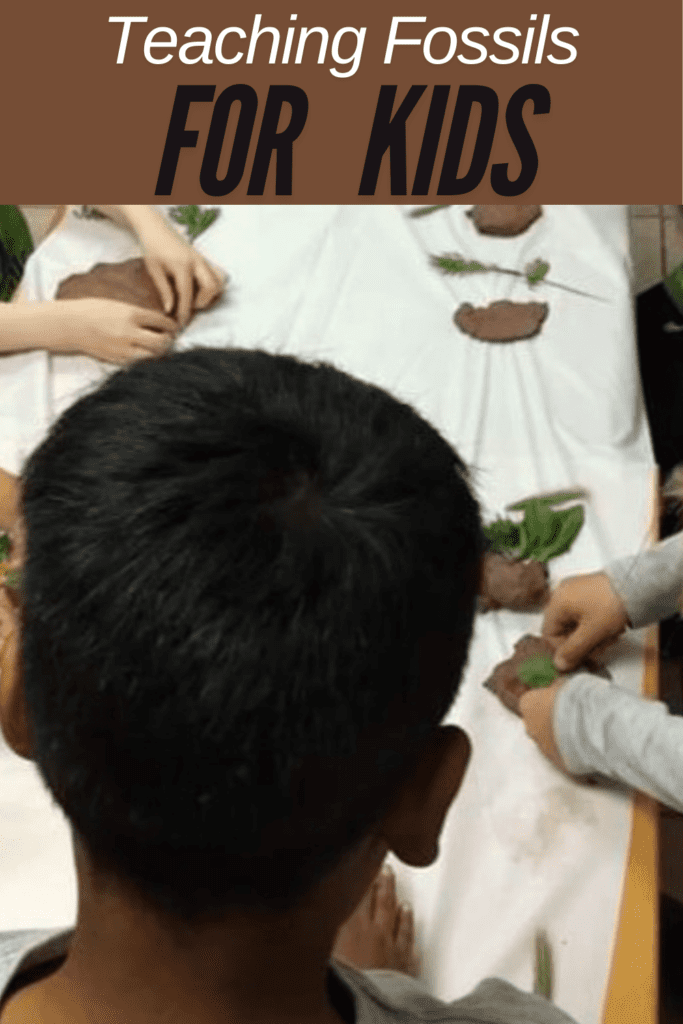
Prepare each child for their space to work on creating their fossils.
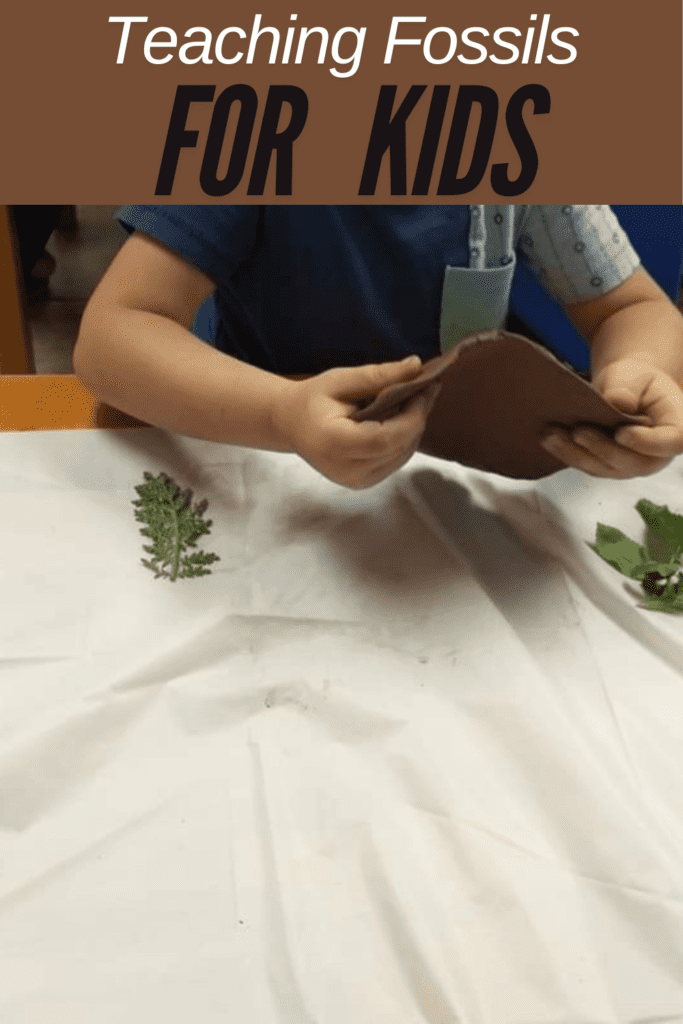
Almost all kids love playing with clay or play dough! Heck, I am an adult, and I still love these types of activities!
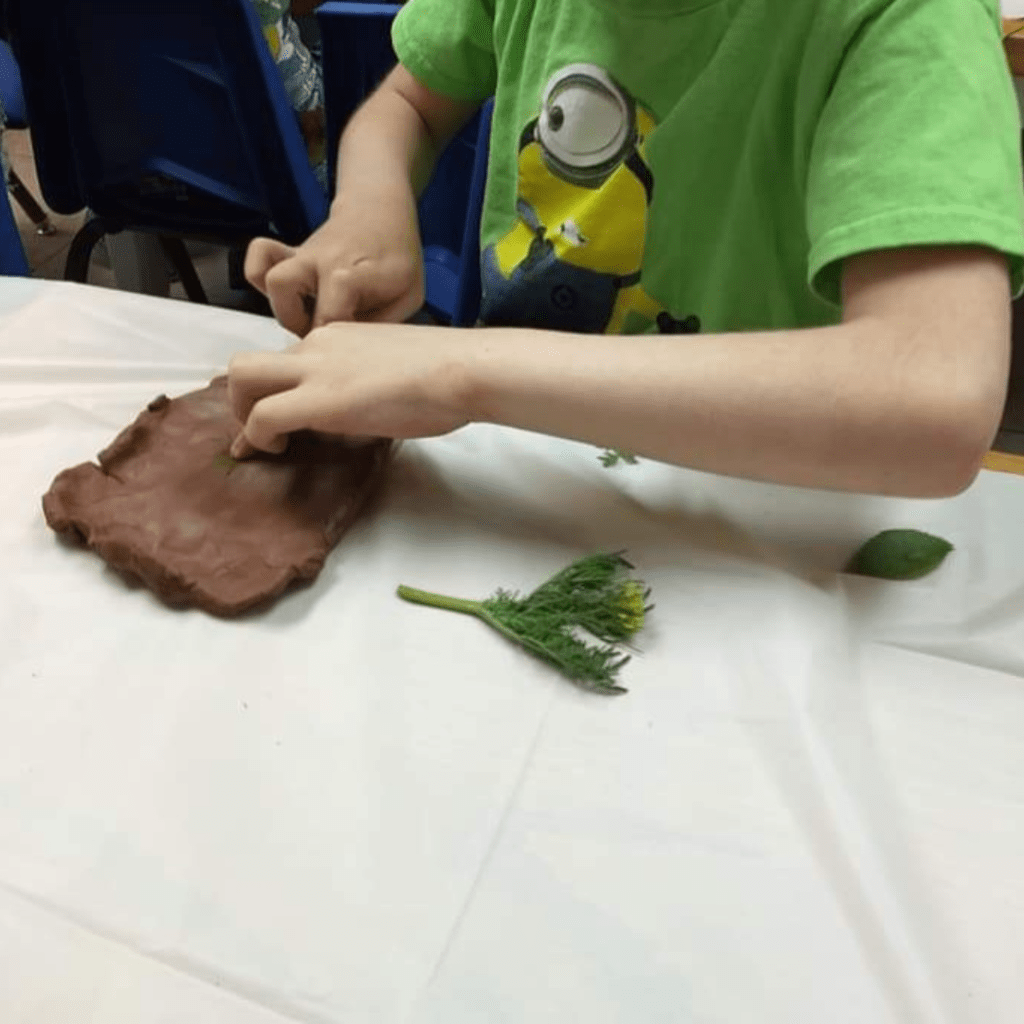
Have your kids make up as many fossils as they wish to see all the different types of fossilized plants and animals. Thick cuttings from bushes are great since they make deep indentations in the clay and play dough.

This activity is also great for fine motor skills for tiny fingers!

Teach them that the clay or play-dough is the clay or dirt in the ground. When the plants or animals die, they can become fossilized over time in the ground. Have them press their plant cuttings or plastic animals into the clay or play-dough to make the formations.
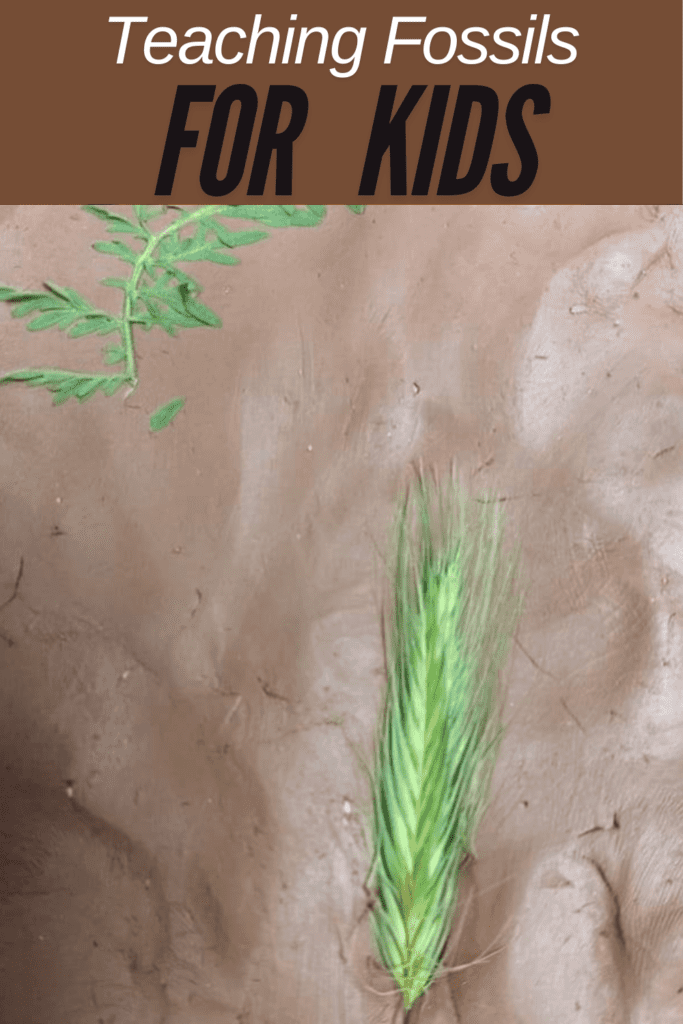
You can have your kids place their fossils to dry out of the way somewhere. Placing the fossils on a paper plate to dry works well for this activity. They will be amazed at the formations of indentations their plant cuttings or plastic animals have made in their fossils.

Why Teach Fossils to Kids
Our modern climate continues to change, and our plants and animals, as well as ourselves, need to learn how to respond to these changes for survival. When we study fossils, we can learn and form a connection to how life, landscapes, and vegetation have responded to changes from the past, and it is important to teach fossils to kids for these very reasons.
When kids make their own fossils with this activity, they get to learn how fossils are formed and made. They have a deeper understanding that when plants and animals die in the wilderness, their formations can become fossilized.
This act of fossilization can help us study and begin to understand what has happened to them, and if the surrounding climate was the cause, and what we can learn from our present and future climate changes.
Improving Our Ecosystems
Learning about fossils in our area can help us make effective impacts on our ecosystems to help species that are becoming extinct have a greater chance of survival.
Kids can learn the impact of extinction on our ecosystems and what actions can be taken to improve them. For instance, they can plant more wildflowers to help the bees. They can provide small logs to small ponds to help the frogs and toads. They can make and hang bird feeders to help the birds. These are all fun ways to help teach your kids how to make useful impacts on our ecosystems to help the species that live in them not only survive, but thrive.
- Plant more wildflowers to help the bees.
- Provide small logs to small ponds to help the frogs and toads.
- Make and hang bird feeders to help the birds.
Conclusion
Teaching kids about fossils is an exciting way to ignite their curiosity about history, science, and the natural world. By exploring how fossils form, examining different types, and even creating their own fossil imprints, kids gain hands-on experience that makes learning memorable and fun. Fossils tell the story of life on Earth, and introducing children to this ancient history fosters a sense of wonder and appreciation for the past. As they uncover each new “discovery,” you’re helping them build not only knowledge, but also critical thinking and observational skills that will serve them well in any field of interest. Embrace the adventure, and watch their excitement grow with every new fossil fact!
Resources: Here are some helpful resources for further information.
- Fossils for Kids – By Fossils for Kids
- Fossils for Kids – By Answers in Genesis
- D4K: Fossils – By PBS
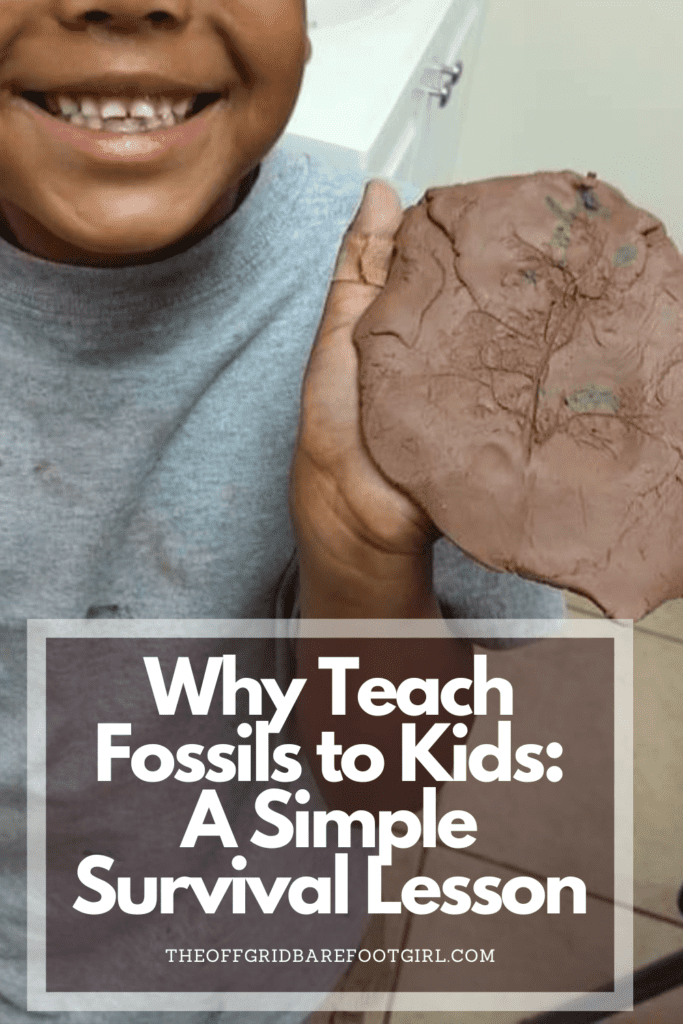
Frequently Asked Questions
1. At what age is it best to start teaching kids about fossils?
Kids as young as 4 or 5 can enjoy learning about fossils with simple activities, like exploring fossil shapes and textures. As they get older, they can dive deeper into concepts like fossil formation and types.
2. How can I make fossil lessons engaging for kids?
Hands-on activities like making fossil imprints with clay, looking at real or replica fossils, and even going on a “fossil hunt” help bring the topic to life. Interactive games and stories about prehistoric life also add to the fun!
3. Where can we find real fossils?
You can sometimes find fossils in local parks, beaches, or hiking areas, depending on your location. Museums, science centers, and fossil sites are also great places to explore and even touch real fossils.
4. What materials do I need to make fossil imprints at home?
You’ll need clay or playdough, small objects like shells or leaves, and some creativity! Press the objects into the clay to create imprints that resemble real fossils, giving kids a fun, hands-on learning experience.
Summary
I hope I have inspired you to plan helpful tips with your kids with these tips and products.
If you were encouraged by this post, I invite you to check out my FREE Printables Page for fun free printables, planners, and charts.
ENTER MY FREE Printables Page HERE
Here are some more of my inspiration posts to check out!
Easy and Fun Nature Crafts for Kids
How to Get Your Teens Out of Their Rooms for Fun Family Games!
Homesteading: How to Do Homesteading with Kids
Preparation: How to Create the Ultimate Bugout Bag for Kids
How To Plan An Exciting Easter Egg Hunt In Your Spring Garden!
DIY Pop-Tart Gingerbread Houses: The Ultimate Holiday Activity for Kids
How to Have a Safe and Exciting Mountain Sledding Experience with Teens!
A-maze-ing Fun In a Corn Maze with Teens
17 Free Outdoor Summer Boredom Busters for Kids
Lake Fishing with Kids: What to Know Before You Go
Ultimate Guide on River Safety for Kids
Why Archery for Kids Teaches a Growth Mindset
Homeschooling Teens With Anxiety: How Easy It Can Improve Grades
5 Best Gardening Tools for Kids to Complete Chores
How to Open A Can of Food With Your Bare Hands
The Best Activities for First Aid for Kids
Knife Safety for Kids: Ultimate Guide to Their Safety
Blessings,
The Off Grid Barefoot Girl

